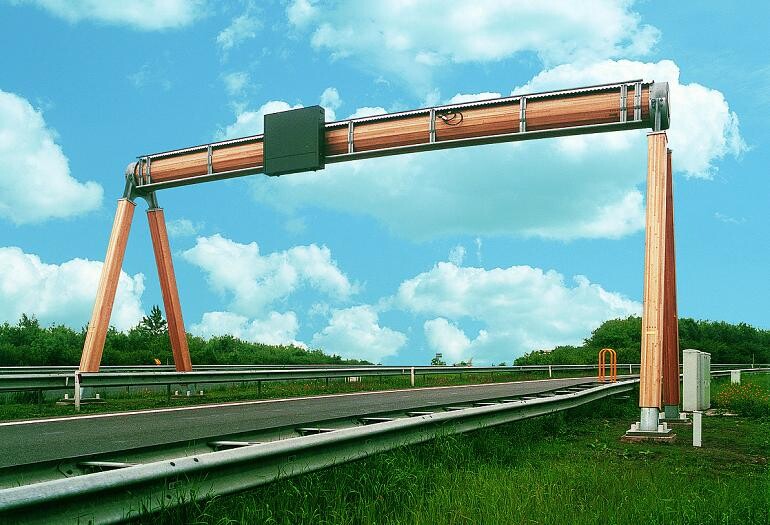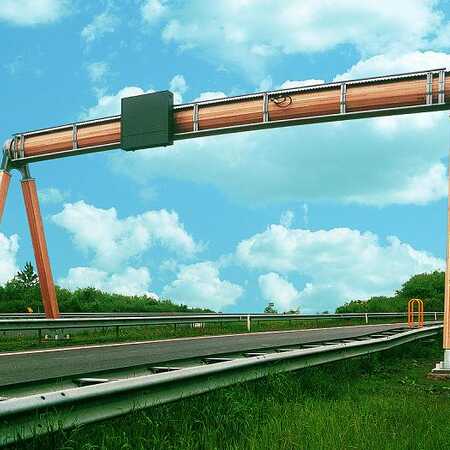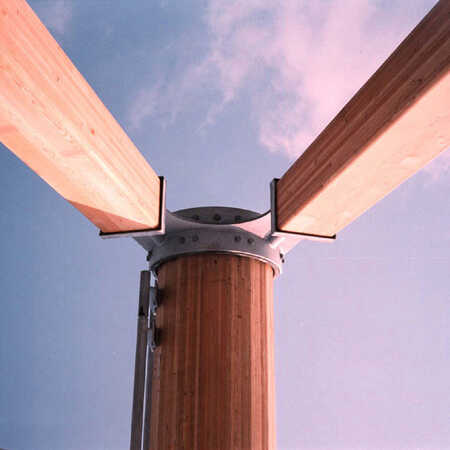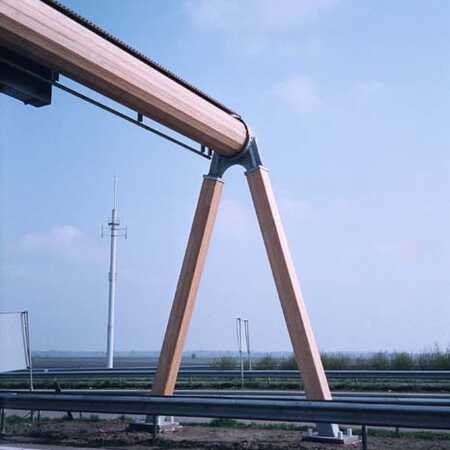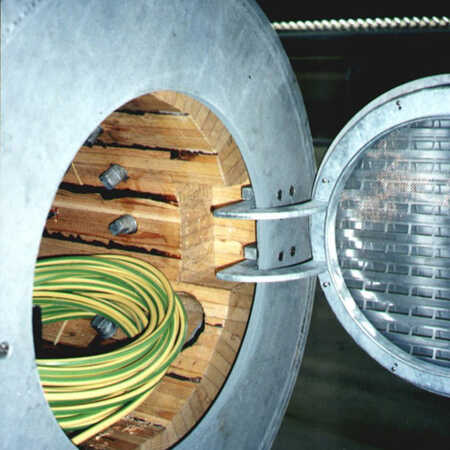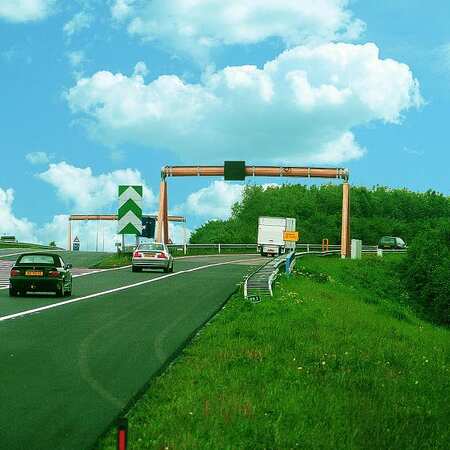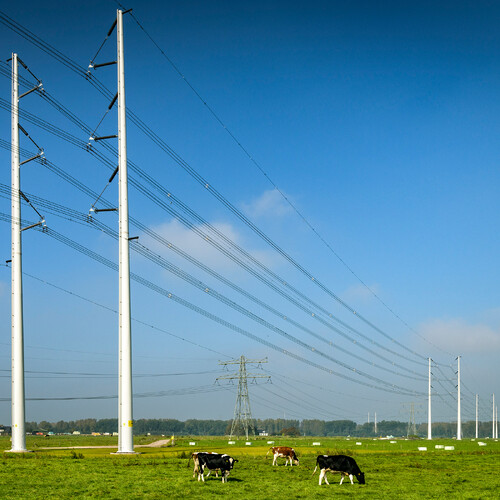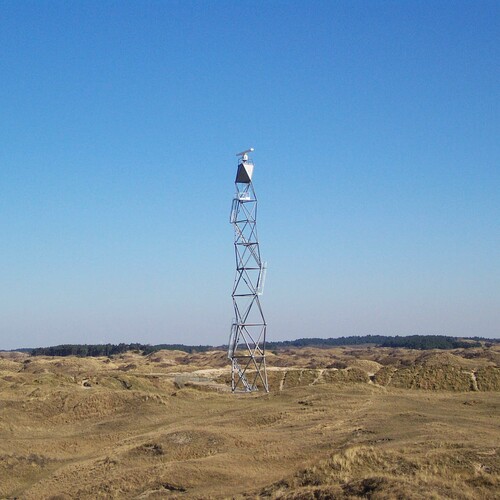An experiment with sustainable, wooden traffic gantries
We tend not to notice, but staggering amounts of steel are incorporated into the background of our daily lives. Take the gantries that hold road signs, display panels and cameras above the motorway. Back in 1998, architectural studio ZJA was commissioned by the Department of Public Works (Ministerie van Rijkswaterstaat) to try out a wooden version, with a view to replacing the gantries above Dutch motorways with wooden designs, thereby reducing CO2 emissions (in steel production) and sustainably binding CO2.
It would be a mistake to recreate the traditional triangular truss design in wood. The large number of connections would make it far too susceptible to moisture accumulation and therefore to the growth of mosses and moulds. A design was sought that had the necessary stiffness for a span of 45 metres and as few joints as possible that the elements could get a grip on, and that would also be simple and cheap to produce.
A glued tube
The design by ZJA consists of a robust pinewood A-frame, held in a steel profile, that supports a gantry in the form of a round wooden tube created by placing trapezium-shaped laminated joists in a circle. This arrangement was chosen for several reasons, the first being that it forms an ideal, dry cable duct. Secondly, a round, hollow truss is both simple to produce and provides for a thoroughly weatherproof and stiff gantry. The tubular form makes it possible to use a vacuum technique. By creating negative pressure in the cavity by means of a vacuum pump, the freshly glued joists are pressed together. No clamps are needed. The result is a smooth and strong span, which because of the use of laminated joists is highly sustainable, requiring small pieces of waste wood rather than solid beams. All the wood used is untreated softwood, with no need for new and expensive large beams that have other uses.
The joints in the tube are resilient to the weather and an open lattice at each end ensures good ventilation. A thin, curved sheet of stainless steel is placed over the tube as a kind of umbrella, to protect it from the direct impact of rain.
The evaluation
Anyone who thinks that these wooden gantries, put in place long ago, have been forgotten is much mistaken. Recently the Foundation for Wood Research in Wageningen published a report based on more than 15 years of precise monitoring of this alternative to the steel gantry. The results are surprisingly positive.
Whereas steel gantries need to be given an entirely new protective coating after 8-12 years, the wooden gantries developed by ZJA still function entirely as required after 15 years, without the need for any maintenance. Recent estimates of the CO2 reduction achieved by the wooden version as opposed to standard gantries suggests it amounts to 94%. Calculations have also been made according to the Milieu Kosten Indicator (MKI), which expresses in euro how much a structure costs society, based on a life-cycle analysis that includes the cost of negating the environmental effects. The wooden gantry turns out to cost 78% less than a steel gantry.
Wooden gantries are more sustainable, maintenance friendly and in the long term cheaper than steel. The Department of Public Works is also looking at wooden crash barriers, noise barriers, hectometre posts and traffic signs.
Award
Winner: Wood innovation Award 1999
Project: #128
